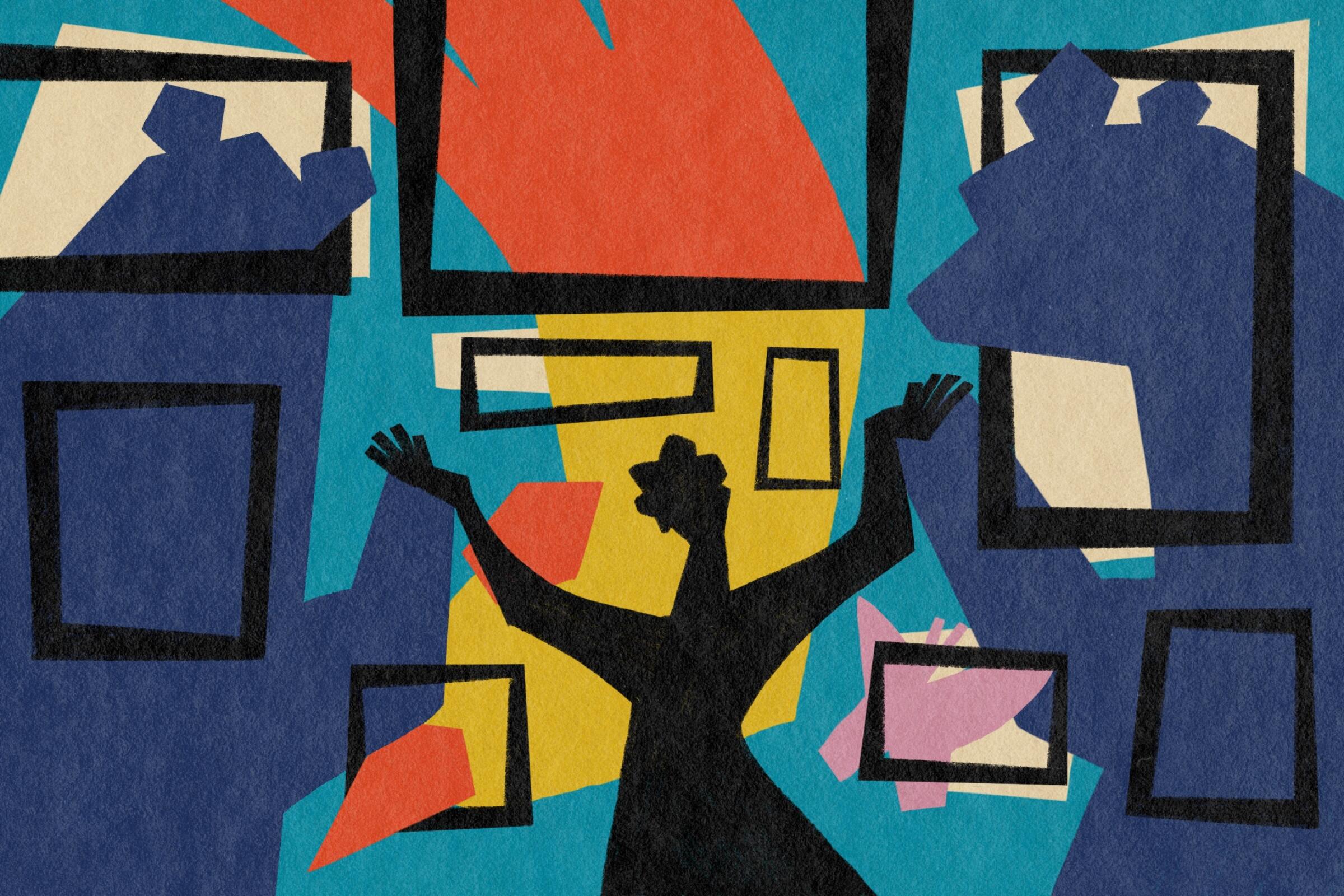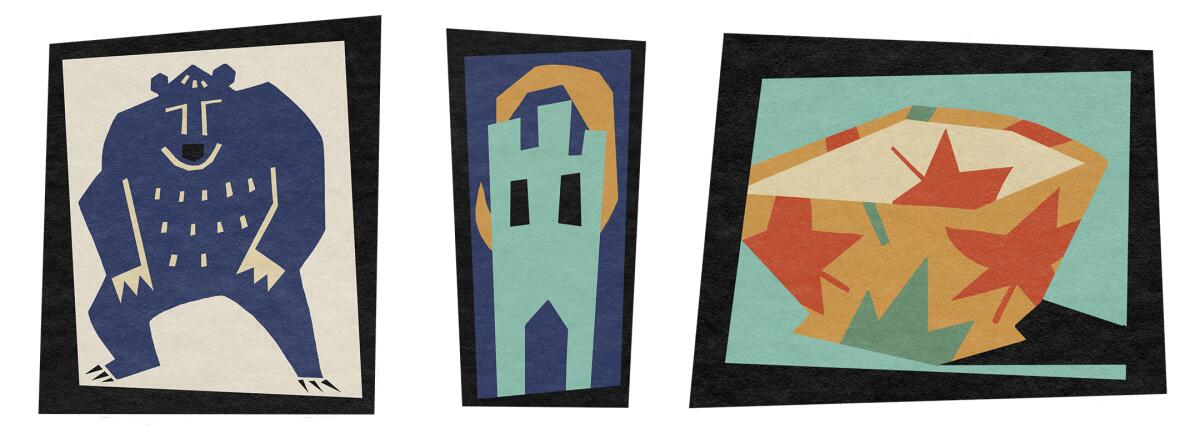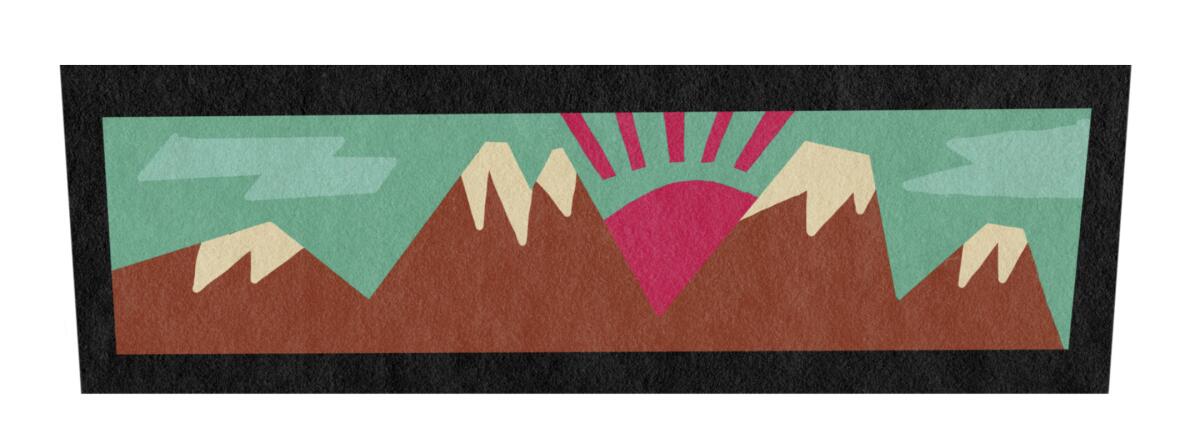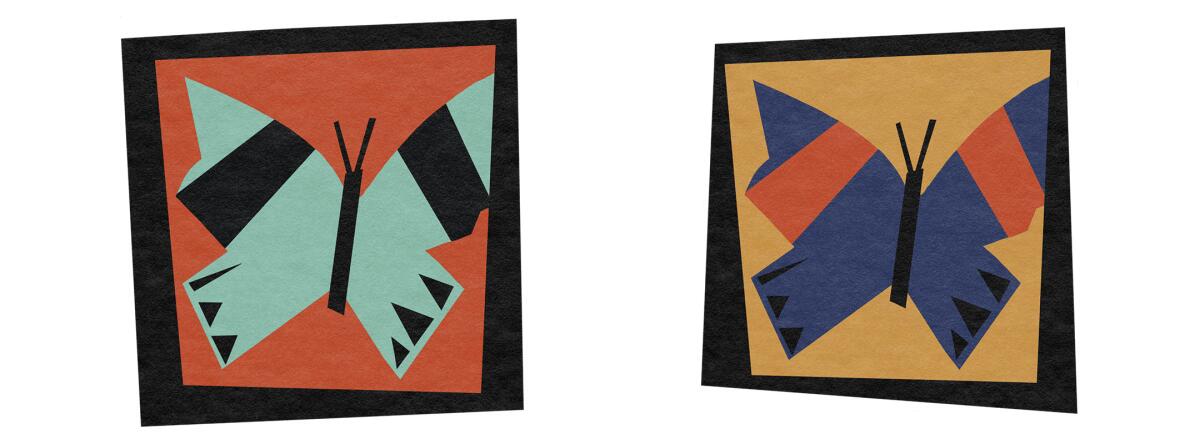Sign up for The Wild
We’ll help you find the best places to hike, bike and run, as well as the perfect silent spots for meditation and yoga.
You may occasionally receive promotional content from the Los Angeles Times.

The pandemic was the second time art rescued me.
The first was 2½ years ago when I had to move for the first time in 25 years. My husband had died unexpectedly. I chose the first place I saw, a nearby two-bedroom apartment so my hurting heart could still be close to our home.
I couldn’t face unpacking. So I didn’t. Rifled-through boxes were scattered around the house, clothes half in, half out. Pans were strewn on the floor, displaced. The place looked like a college dorm room.
Welcome to our comprehensive gift guide for the 2020 holiday season.
Minus the stacks of art — woodblock prints, oils, mixed media and art photographs we had accumulated over the years.
We bought things we liked, sometimes from nice art galleries, sometimes from Goodwill. Once, on a trip to the Northwest, we found a collage featuring a red cardinal wearing a golden cape soaring against a star-filled blue sky. I loved the magical vibe; he loved the colors. He also loved how much I loved it. Another time, we returned from a trip to Croatia happily carrying a series of landscapes created by naive artist Ivan Lackovic. We never spent extravagant amounts of money. Occasionally we splurged, but most items fell in the $200-or-less range.
Our old bungalow was only 850 square feet — cozy enough for us; much too small for some of our pieces. We had only slivers of walls to decorate. We did the best we could. Hanging art on the walls was a puzzle we worked on together. We didn’t always agree on what should go where. Once the pieces fit, the puzzle felt done.
We still collected, but as we did, fewer things made it onto the walls. Art that didn’t fit had been stashed under the bed, shoved behind doors, crammed into a storage unit. Were we hoarders? Not sure, but as I packed to leave the bungalow, I counted about 200 framed pieces.

My new place had ample wall space and high ceilings, plenty of room for some of those unseen works to be seen. A dreamy Japanese-style print of a full moon amid trees would go over the credenza; three massive butterfly canvases by L.A. artist Frank Minuto would fly in the second bedroom.
But what about the rest of the pieces? Would I have enough room? The new LACMA isn’t even built yet and already it’s short on gallery space. Even before a reported 10,000 square feet was subtracted from the final plans, the towering walls couldn’t quite match the collection it had. I share the concern.
My solution came in the form of a promise. I vowed that my walls would be an ever-changing gallery, curated for an audience of one: me. I would rotate pieces, keeping the walls (and me) freshened, unpredictable, youthful, in that not-yet-jaded way. A friend whom I’ve known for years, has had the same photograph of the Half Dome summit hanging over her dresser for more than two decades. But unchanged art runs the risk of becoming invisible, doesn’t it? People change and grow, but their walls don’t seem to keep up.
My early introduction to art was a self-taught muddle. I can’t recall any pictures adorning the wooden walls of my lakeside Connecticut home growing up. Art museums were unknown to me, unless you count the Just Buttons Museum — a museum literally devoted to sewing buttons — in the next town over, which I visited on school field trips. My art education came from the pages of a 1961 World Book encyclopedia set. My older sister and I would huddle in close when we flipped to the subject “painting,” poring over the art plates, like Toulouse-Lautrec’s garish circus. We read about an ancient Japanese scroll of mallard ducks in a stream that evoked a gossamer dream. John Singer Sargent’s “Portrait of Madame X” in a black gown looked like a photograph to us.
My curatorial style started from the ground up. I would lay out pieces of art on the floor to decide what to pair with what. But almost as soon as I found a grouping I liked, I would pick up another and another, until I couldn’t tell what should go where. I was paralyzed by choices. I had so many favorites: an abstract print by midcentury Japanese artist Rokushu Mizufune; a pastel landscape of the desert meeting the sea by Ursula Wolf-Rottkay, an artist I know little about; prints of identical twin bears, stylized in deep blue.

Enter my friend Val, who, for the most part, loves my art as much as she loves me. She had flawless instincts when it came to using space and went to work, bringing a nuanced order to the chaos on the floor. In a few visits, we had scoped out places on the wall for a third of the pieces. She also had assembled something I had always wanted: a gallery or salon wall. Loosely defined, it’s a no-rules collection of disparate things you arrange however you like.
One of my favorite examples was created by Samuel F.B. Morse (he of Morse code fame). He envisioned a series of the Louvre’s masterpieces, including the “Mona Lisa,” filling a single gallery space. My husband once surprised me with a photo of Morse’s painting that showed portraits of me (Mona Lisa became Mary Lisa) photoshopped onto the walls, one of the clever ways he showed love.
Choosing where to put art, I quickly learned, was just part of the challenge. After design choices were made, I had to figure out how to hang what was lying on the floor. Some pieces were crazy heavy; others had odd shapes.
I enlisted help from my nephew Colman, skilled in hanging art on Hollywood sets. He expertly placed more than 20 pieces in a few hours in the exact spots I had envisioned. As each work went up, the walls came alive. The framed bears danced with Mediterranean landscapes. Suddenly, I began feeling, for the first time since my husband’s death, the grief-ridden fog starting to clear.

I loved my small museum of an apartment and had no intention of leaving. But the pandemic had other plans. COVID-19 upended life in California in March. It forced me, like so many others, to change my work routine and curtail travel. I was alone again, and public health officials urged me to keep it that way. But I did have my health and the art on my walls.
Thankfully, I also still had my job. With extra time on my hands, I started to feel the need for a more permanent nest, like the one I had left. I shopped for a place, bought the first one I saw.
Again I moved.
Again I packed up my art.
Again I laid out pieces on the floor.
This time, there was no mental fog. Instead I was excited by the fresh curatorial possibilities, especially when so little was possible outside those walls. Epic wildfires raged and an anxiety-inducing presidential election intensified. I remained indoors, obsessing over the art stacks waiting to be organized. The processes of creating yet another new interior view seemed key to offsetting the stay-at-home sameness of summer.

Again Val came to bring order to my half-thoughts of what should go where, a process that now felt familiar and comforting. She had a fresh idea: “Hang them all at the same level,” she said, “so your eye can sweep from one side of the room to the other, seeing a constant line of art.”
Inspire creative minded people on your gift list this 2020 holiday season with our favorite art books.
I loved it. I would be able to see everything in a single 360-degree pivot. A true panorama. We mixed up the art pairings too, resisting the sameness of rehashing our old choices. This time, a new work would be the centerpiece of the gallery wall: a woman in folk art garb made trippy by op-artist Victor Vasarely. It would be joined by two skinny Japanese landscape prints, and a print of a stylized sailboat swallowed by the horizon of a deep blue sea.
Again I needed assistance placing the art. My nephew came by to lend his hand; he hung each piece, this time at an eye-level height of 63 inches. (At most galleries art hangs lower, but this height felt more comfortable in my space). In a few hours, more than 20 pieces adorned my walls. I looked them over like a curator who has just finished preparing for a show and, as I did, the sense of calm and control, which vanished whenever I put on my mask to walk outside, returned. Inside, standing in front of my new home exhibit, I could breathe again, rejuvenated.
These days, when I have a moment between the relentlessness of the news cycle, the next outdoor, socially distanced activity (hiking, biking, walks in my neighborhood), the next stay-at-home order, I find myself thinking of my next gallery pivot. My soul yearns to see memories, places, art anew. I sort through possible configurations. (Should I call Val yet or keep going?)
Sometimes, as my mind sifts through the art I’ve collected over the years, thoughts and emotions stashed away like works of art under the bed in the old bungalow find me. Here is my husband hanging one of the butterfly canvases, their wings red like a beating heart, as love warms the room. Here he is watching me look longingly at Morse’s gallery painting, knowing I wanted to jump inside the scene like Mary Poppins.

On a recent pivot, I lingered on one memory in particular: My husband at the L.A. Art Show, tugging my arm to show me a 19th century French watercolor he liked. It was a tangle of muddy brown and green trees in the woods near Besançon. He was smitten. The work meant little to me at the time but, as I thought more about it, there was something there that I hadn’t considered: us. There we were; there was our life. A canopy of trees similar to what we walked under. Woods similar to where we fell in love. These were the things that mattered most to him.
We went back and forth — him eager, me reluctant. He had the better eye, of course. So we bought it. It was one of our pricier purchases. I hung it on the wall only after he was gone. Now, when I view the art, I find myself wondering what my husband would think of walls no longer in need of being puzzled out. My eye is a little sharper now. I linger on pieces that were his favorites, not mine.
Sign up for The Wild
We’ll help you find the best places to hike, bike and run, as well as the perfect silent spots for meditation and yoga.
You may occasionally receive promotional content from the Los Angeles Times.